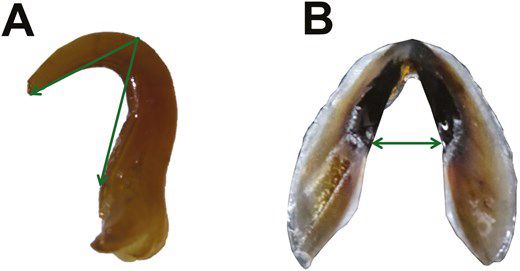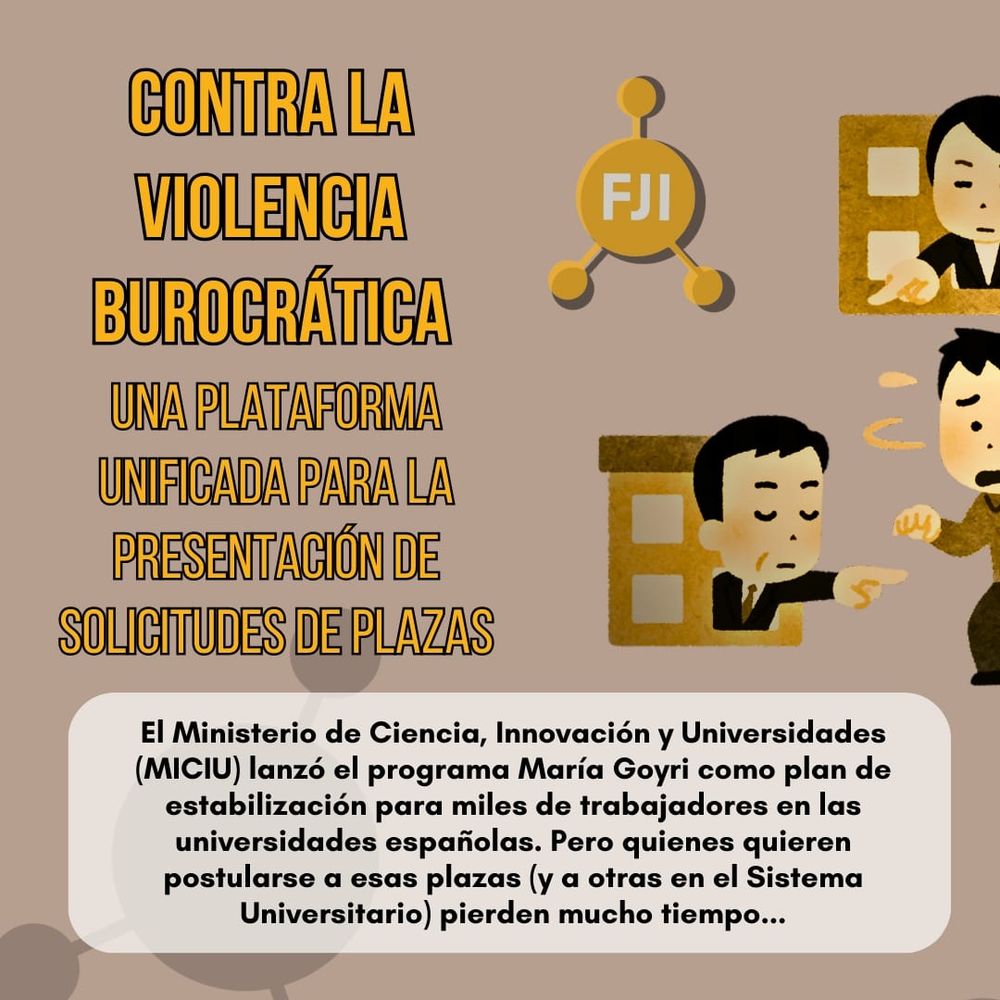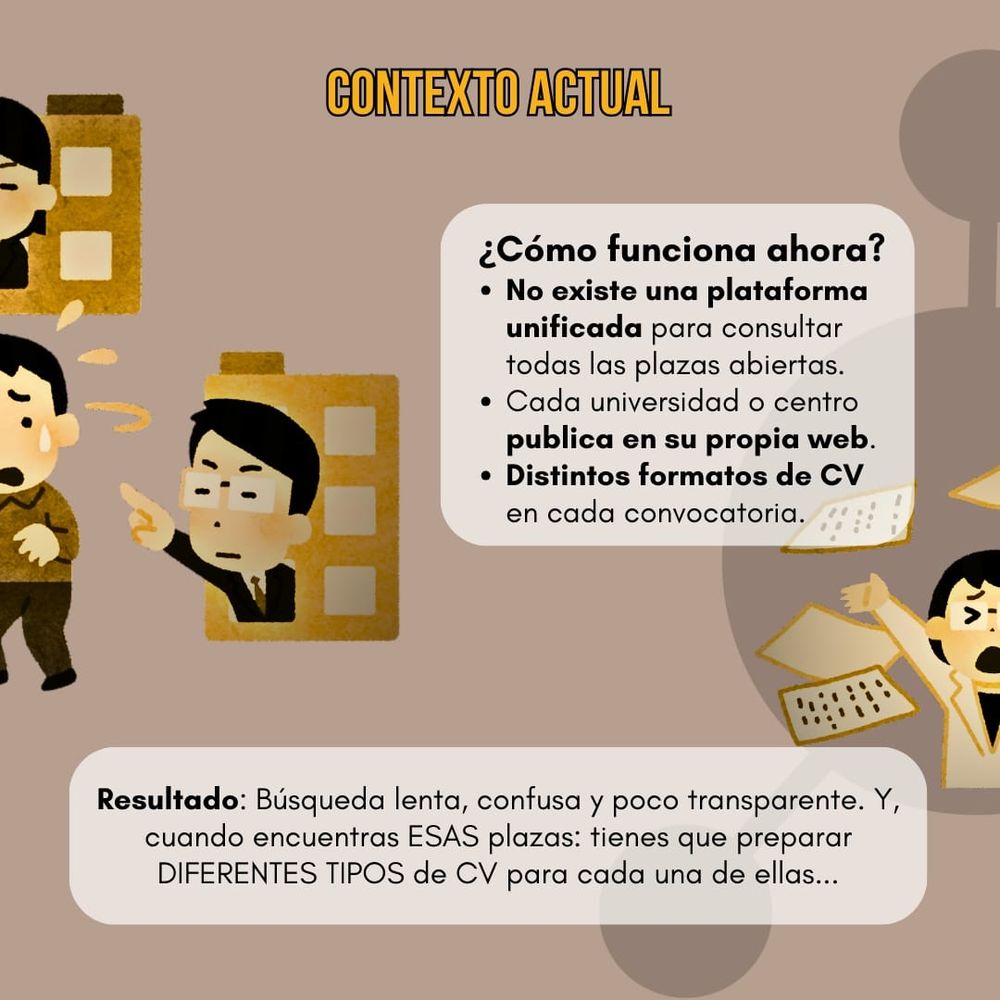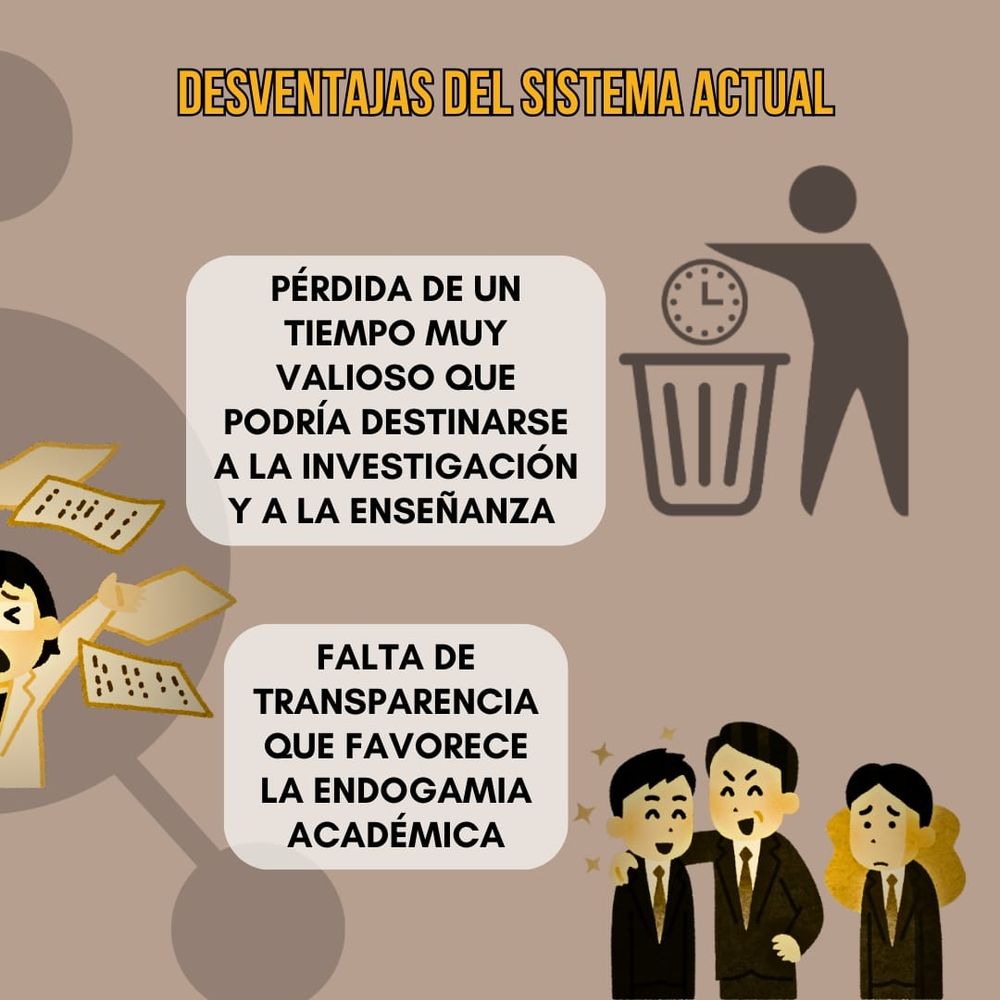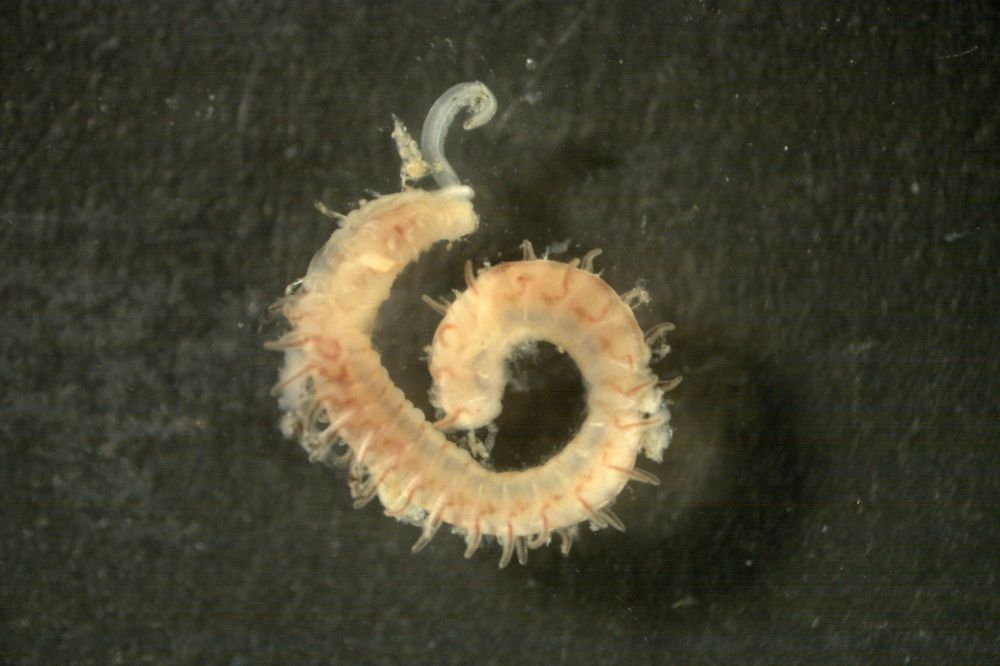
Cropped image showing an engraving of an octopus

Full-page engraving from a book. It shows an octopus lying on the seabed, with a squid and a cuttlefish coming towards. The cuttlefish is making a cloud. The engraving is captioned: 'Plate XI. A Poulpe. A Cuttle-Fish Making His Cloud. A Calmar'.
Good morning to everyone but especially to all the octopuses, for today is their special day!
To celebrate World Octopus Day, here's an illustration of an octopus from the book 'The World of the Sea' by Moquin Tandon, published in 1869.
📷 Reserve 591.92 TAN
#WorldOctopusDay #OctopusDay #RareBooks
08.10.2025 10:04 — 👍 105 🔁 31 💬 0 📌 3

Foto del equipo de trabajo en Xixón de ECOMARG
@lavozdeasturias.bsky.social se hace eco del trabajo del grupo de investigación ECOMARG, liderado por la investigadora @pilarrl.bsky.social.
Su labor se centra en conocer los fondos marinos para protegerlos.
#SponBIODIV
#BIODIV_A6
#BIODIV_A3
#MICROPLASTUR
www.lavozdeasturias.es/noticia/inas...
22.09.2025 14:04 — 👍 2 🔁 2 💬 0 📌 0

Foto de Inés en delante del microscopio con el que analizará los organismos filtradores en busca de microplásticos.
Inés Fernández estará con nosotros hasta finales de 2026 trabajando en el proyecto "MICROPLASTUR: Microplásticos asociados a organismos filtradores en el medio acuático astur: Porifera", financiado por @gobasturias.bsky.social
18.09.2025 08:15 — 👍 0 🔁 1 💬 0 📌 0
Big shout out to all the collaborators, particularly @cefafalopodo.bsky.social @aubombarely.bsky.social @vargaschavezc.bsky.social Judit Salces-Ortiz & Nuria Escudero, for endless adventures together while working on this project! 🙏
07.10.2025 07:28 — 👍 1 🔁 1 💬 1 📌 0
Pre-conference workshops | CIAC 2025 Okinawa
Here is all of the information regarding workshops
www2.aeplan.co.jp/ciac2025/p_s...
Workshops range from: Cephalopod fisheries management; cryptic biodiversity; Cephalopod Health Management; and using AI to unlock new frontiers in cephalopod research.
19.09.2025 05:15 — 👍 0 🔁 1 💬 2 📌 0

Planned Schedule for CIAC, note that we are also planning to host a 'Cephalopod Research Network" Dinner on Monday October 27th at 7PM EST to get to know about our fellow members some more!
19.09.2025 05:13 — 👍 0 🔁 1 💬 1 📌 0
Greetings all Cephalopod researchers! If you have not been keeping up with all of the news regarding CIAC, I will share everything that I possibly can here!
Anything else I can provide, please let me know
Best,
Austin
#CIAC
#CephalopodResearch
#Cephalopods
#Cephalopoda
#Cephalopod
19.09.2025 05:11 — 👍 3 🔁 2 💬 1 📌 0


Wir möchten Euch diesen Artikel vorstellen, in dem unser Kollege Fernando (@cefafalopodo.bsky.social) über die Kopffüßer der Balearen interviewt wird. Wir hoffen, dass er Euch dabei hilft, Euer Deutsch zu üben.
www.mallorcazeitung.es/umwelt/2025/...
25.08.2025 11:02 — 👍 0 🔁 1 💬 0 📌 0
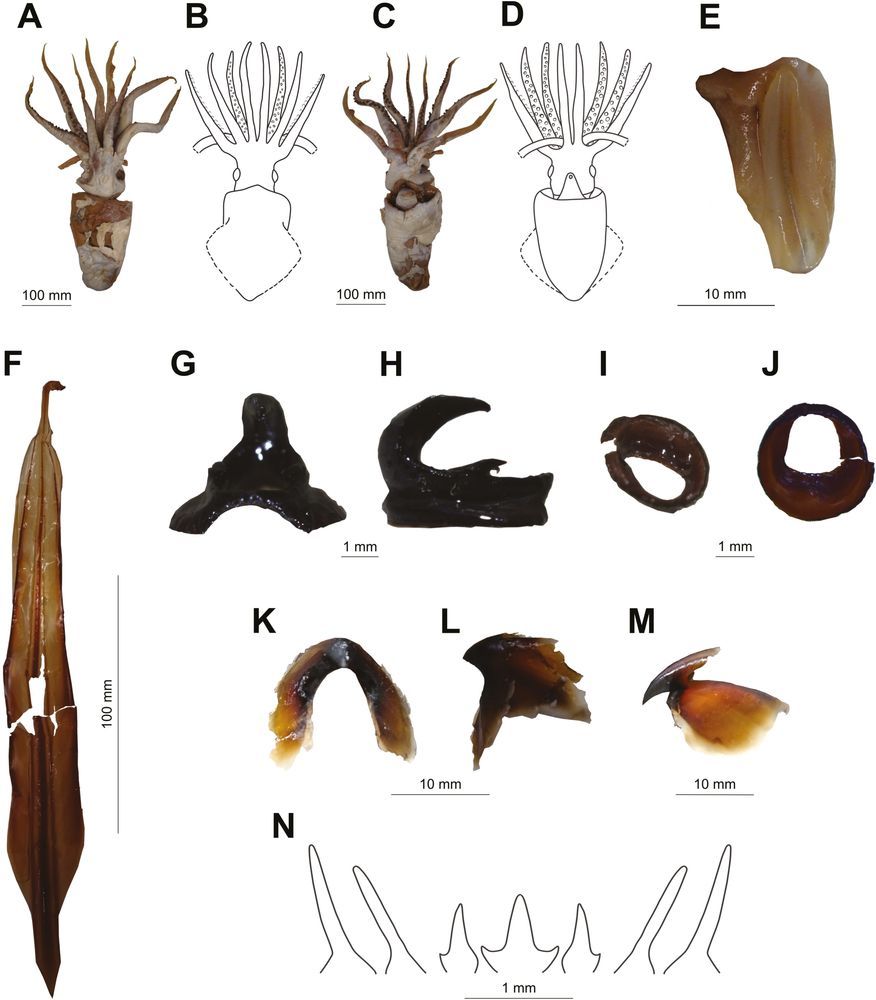
What's more, another specimen found in the stomach of a sperm whale from the Antarctic was not found to fit into any Oegopsid family, described here as a new species: Mobydickia poseidonii! I wonder if you can guess the inspiration...(2/2) 🐋🦑🧪
@linneansociety.bsky.social
@cefafalopodo.bsky.social
28.07.2025 09:01 — 👍 4 🔁 1 💬 0 📌 0
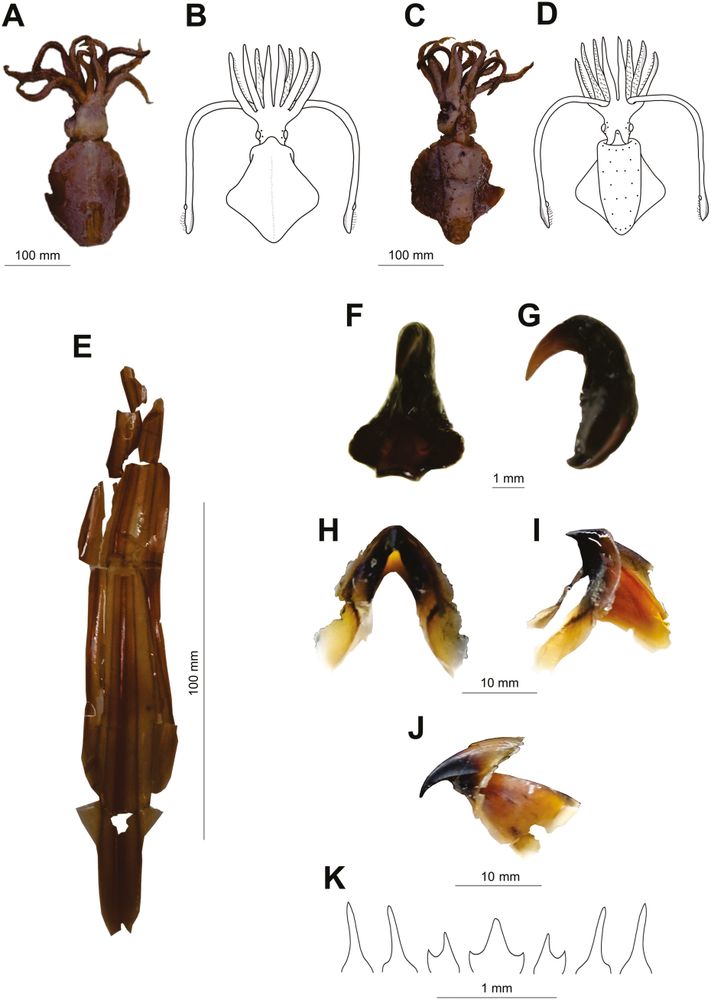
Cryptic biodiversity challenges assessments of global biodiversity & ecosystem health, including in the ocean. Here, morphology & DNA of Ancistrocheirus lesueurii was studied, revealing ~6 cryptic species! You've gotta be squidding me...🌍🧪🦑 (1/2)
academic.oup.com/zoolinnean/a...
28.07.2025 09:01 — 👍 11 🔁 6 💬 2 📌 0
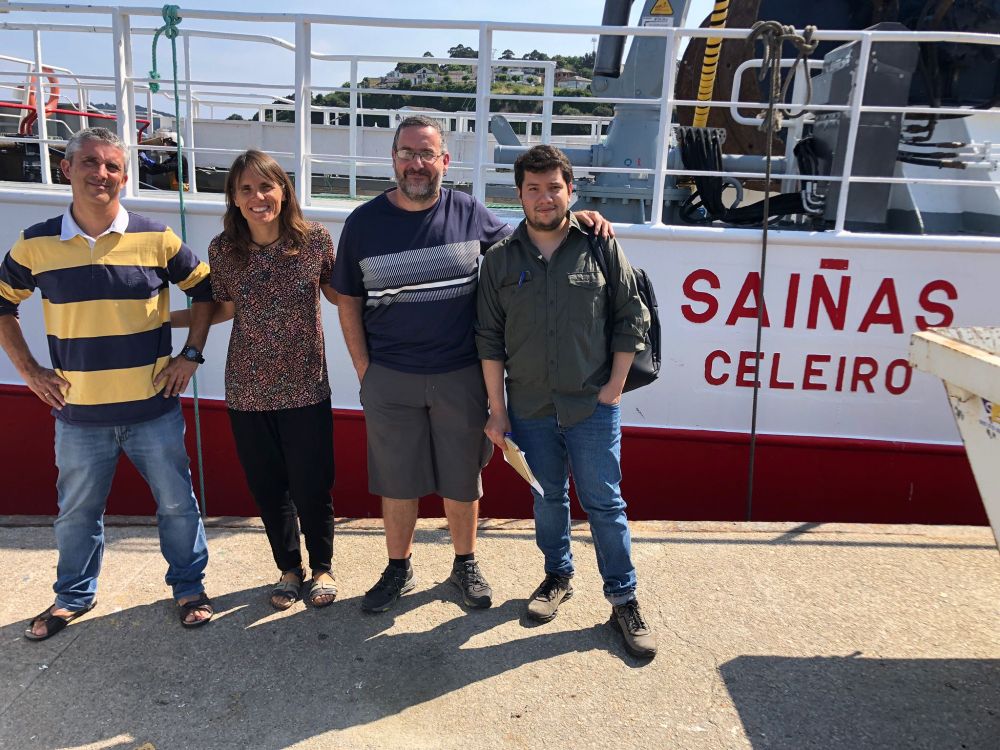
Equipo de trabajo del COX delante del pesquero Saiñas.
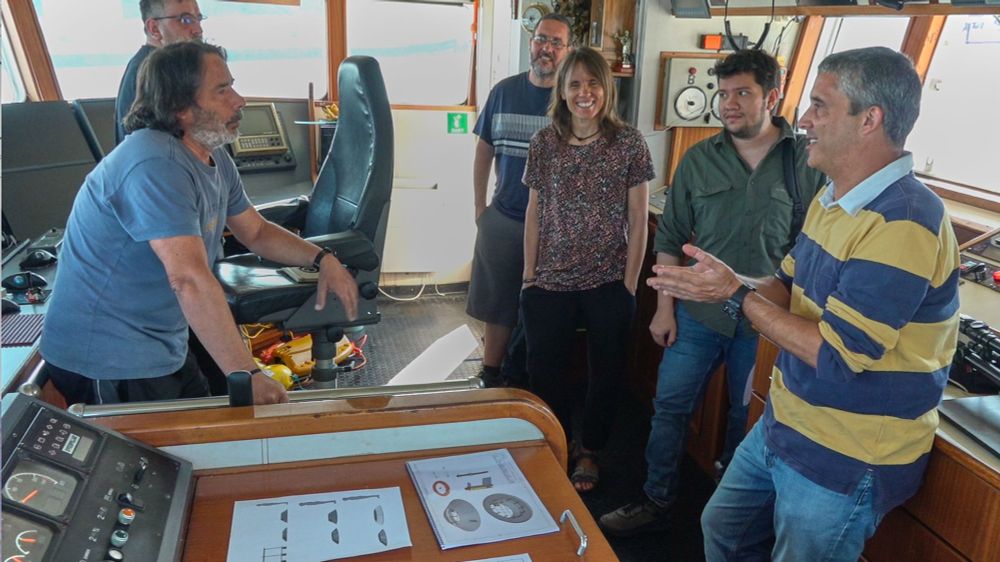
Reunión de trabajo con la tripulación del Saiñas, en el puente del barco.
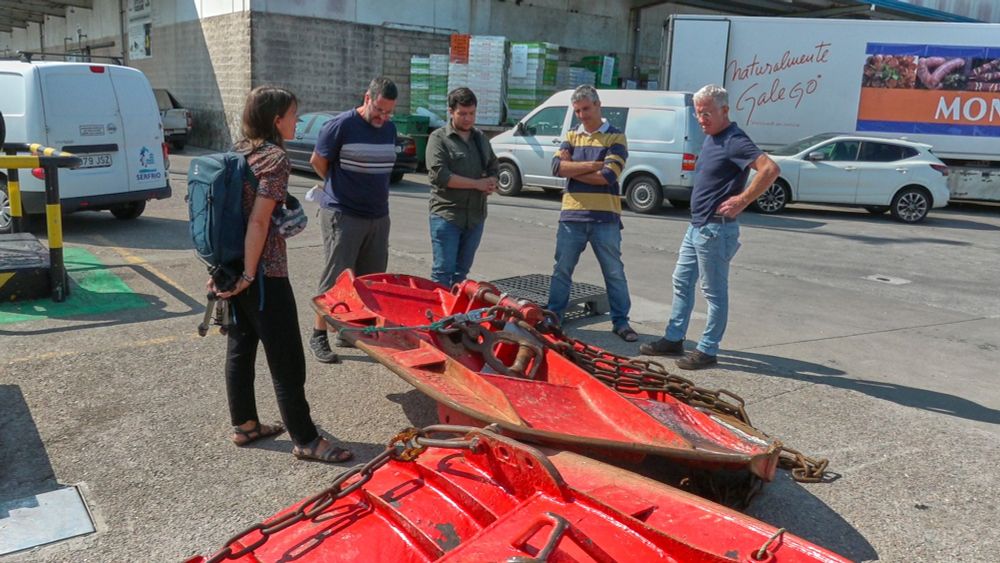
Comprobando las puertas de trabajo de la red de arrastre y la posible interacción con el lander antiarrastre.
Seguimos con el proyecto #DILAN #PLEAMAR reuniéndonos con la tripulación del Saiñas para decidir la zona y detalles de la maniobra de la campaña de septiembre.
Veremos si hay éxito con los nuevos lander capaces de soportar el paso de una red de arrastre.
#FEMPA
@fbiodiversidad.bsky.social
22.07.2025 12:59 — 👍 2 🔁 1 💬 0 📌 0
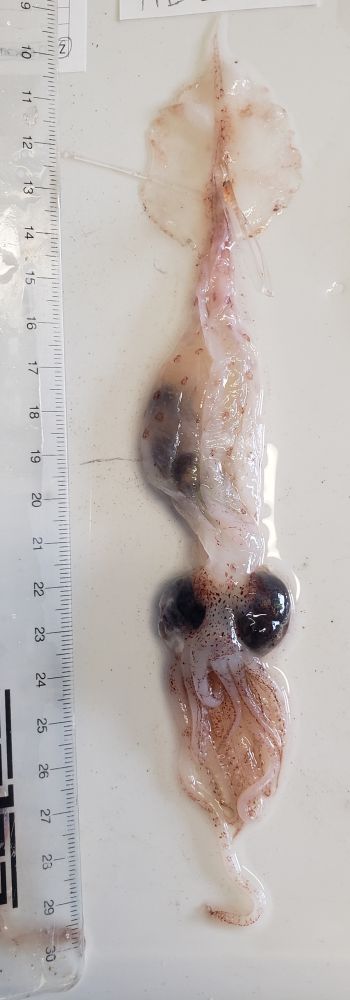
This year's Squidmas samples are from sub-Antarctic waters. This is Galiteuthis, a 'glass' squid (Cranchiidae, same family the colossal squid). There are undescribed species in this genus so looking forward to genetic results! #SQXmas2025
14.07.2025 08:29 — 👍 7 🔁 6 💬 0 📌 0
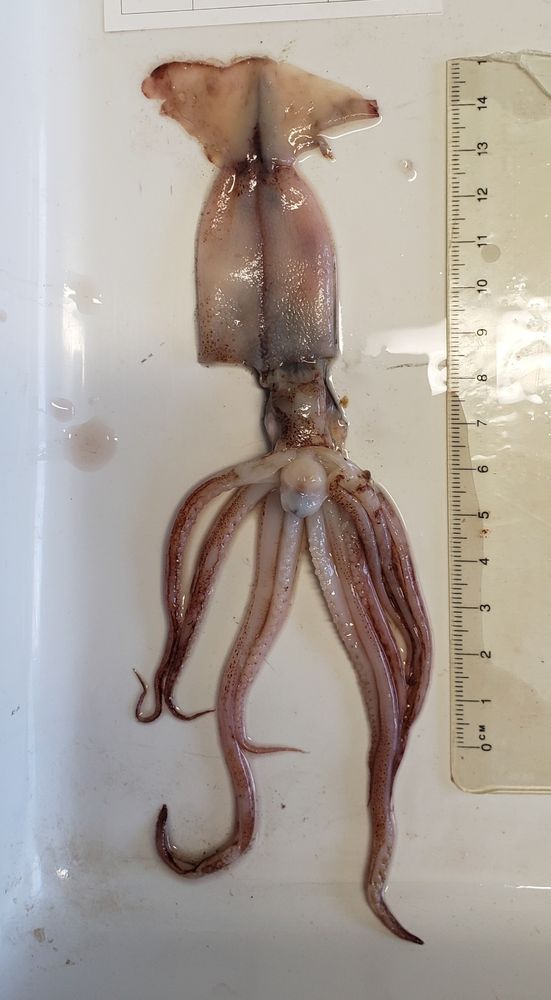
This is a young Moroteuthopsis, a warty hooked squid (family Onychoteuthidae)
14.07.2025 08:31 — 👍 10 🔁 4 💬 0 📌 0
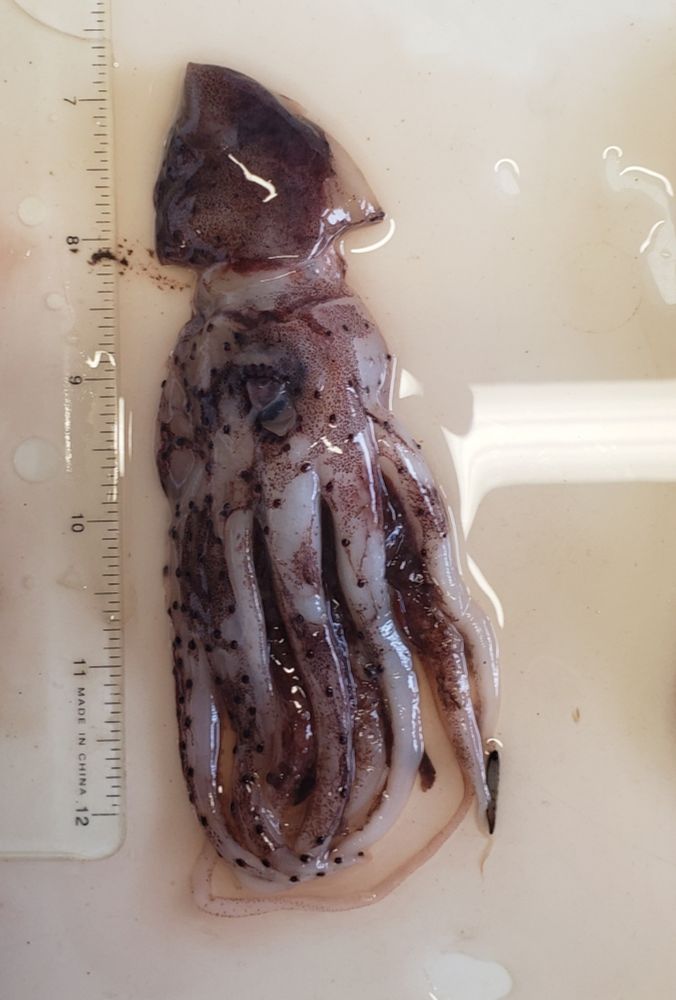
We've had a couple of cock-eyed or jeweled squid species (family Histioteuthidae); this is a nice H. macrohista, one of the more extreme examples of tiny mantle (yes, that's the whole thing!) compared to head & arms. See also distinctive long arm-tip photophores. #SQXmas2025
14.07.2025 08:35 — 👍 8 🔁 4 💬 0 📌 0
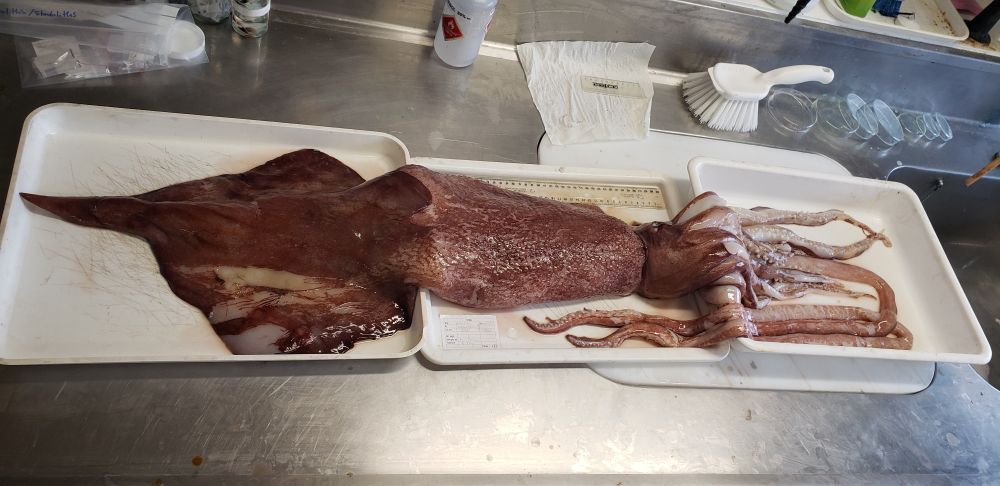
#SQXmas2025 continues. On the larger end of the scale, a hefty warty hooked squid, Onykia sp.
16.07.2025 08:46 — 👍 15 🔁 4 💬 0 📌 0
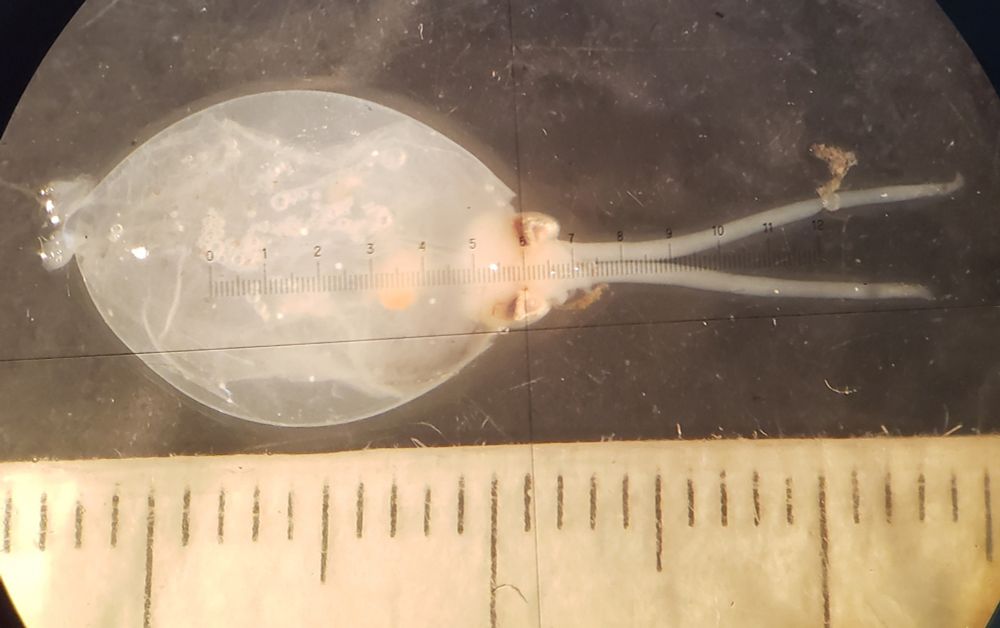
And a teensy glass squid (cranchiid), Liocranchia
#SQXmas2025
16.07.2025 08:48 — 👍 21 🔁 6 💬 0 📌 1
this footage is notable because while blackwater photographers encounter larval ancistrocheirus quite often (if you search for ‘sharpear enope squid’ you will almost entirely find blackwater photos of it) images of adults in situ is extremely rare
04.07.2025 18:30 — 👍 3 🔁 1 💬 0 📌 0
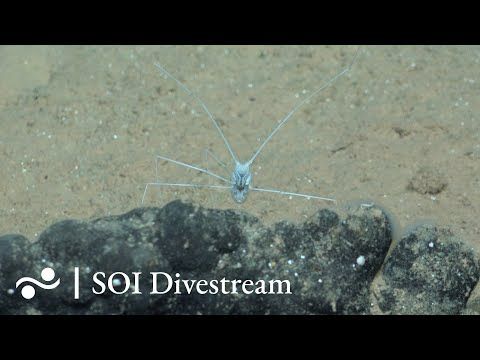
"UFO" Knoll | SOI Divestream 690
YouTube video by Schmidt Ocean
here’s an incredible in situ encounter with an adult ancistrocheirus, taken by ROV SuBastian of @schmidtocean.bsky.social during a 2024 expedition: www.youtube.com/live/-ky9jTc...
04.07.2025 18:27 — 👍 3 🔁 1 💬 1 📌 1
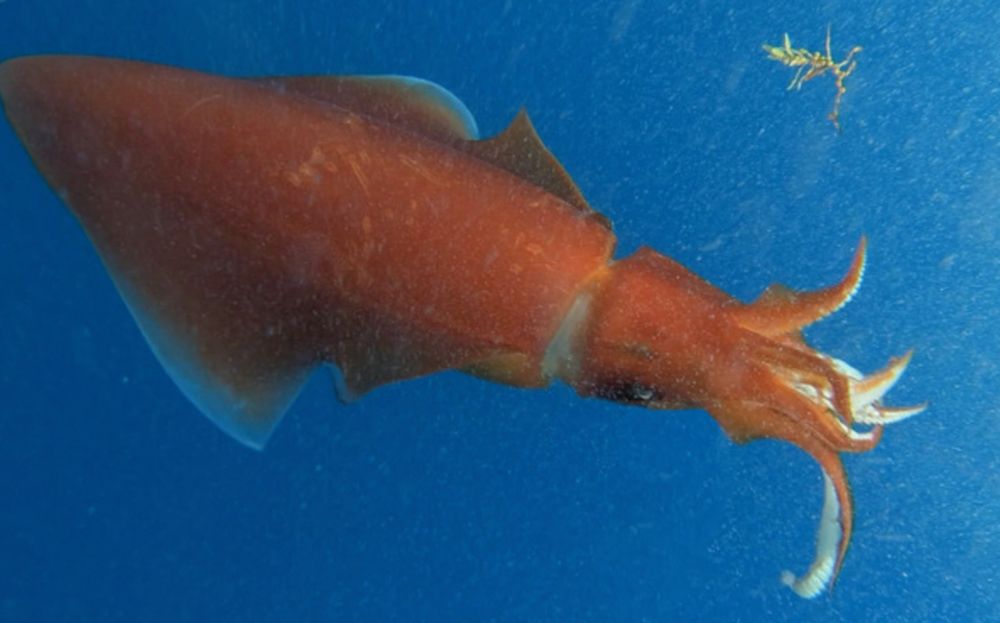
Diamondback Squid (Thysanoteuthis rhombus)
Diamondback Squid in November 2020 by Karl Questel
ancistrocheirus is notable within the family for being much larger. i joke that it’s like what you’d get if a firefly squid decided it wanted to do its best impression of a diamondback squid:
www.inaturalist.org/observations...
04.07.2025 18:24 — 👍 3 🔁 1 💬 1 📌 0

Firefly Squid (Watasenia scintillans)
Firefly Squid from 本州, 富山県, JP on April 28, 2025 at 11:01 PM by kisaland
to put ancistrocheirus in context with other squid you might be more familiar with if you aren’t a squid taxonomist:
it’s a in a family known for having a large number of photophores, the enoploteuthids. the firefly squid is also in this family.
www.inaturalist.org/observations...
04.07.2025 18:21 — 👍 3 🔁 2 💬 1 📌 0
in plain english, this is a really cool paper that does a more thorough review of existing specimens of ancistrocheirus and finds several new species. a surprise finding was that one specimen wasn’t ancistrocheirus at all, but something so different it had to be placed in a new family and genus
04.07.2025 18:17 — 👍 2 🔁 1 💬 1 📌 0
mobydickia was chosen as the genus name due to it being found in a sperm whale stomach and almost being entirely depigmented (basically albino in appearance, like moby dick)
poseidonii was chosen as the species name due to the resemblance of the tentacle hook morphology to a trident
04.07.2025 18:14 — 👍 5 🔁 1 💬 1 📌 0
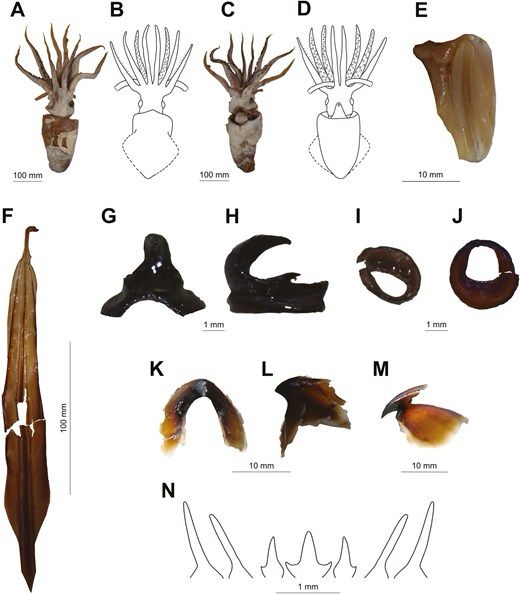
identification schematic for mobydickia poseidonii. starting from top left moving clockwise, there are: dorsal and ventral full body photos and sketches of the specimen, arm sucker photographs, tentacle hook photographs, photographs of the beak, a diagram of the radula, and a photograph of the gladius
absolutely wild finding that a specimen previously identified as ancistrocheirus, retrieved from a sperm whale stomach, was so different from any known oegopsid that it was placed in a new family and genus. it’s entirely depigmented except around the eyes.
mobydickia poseidonii
04.07.2025 18:12 — 👍 10 🔁 4 💬 2 📌 0
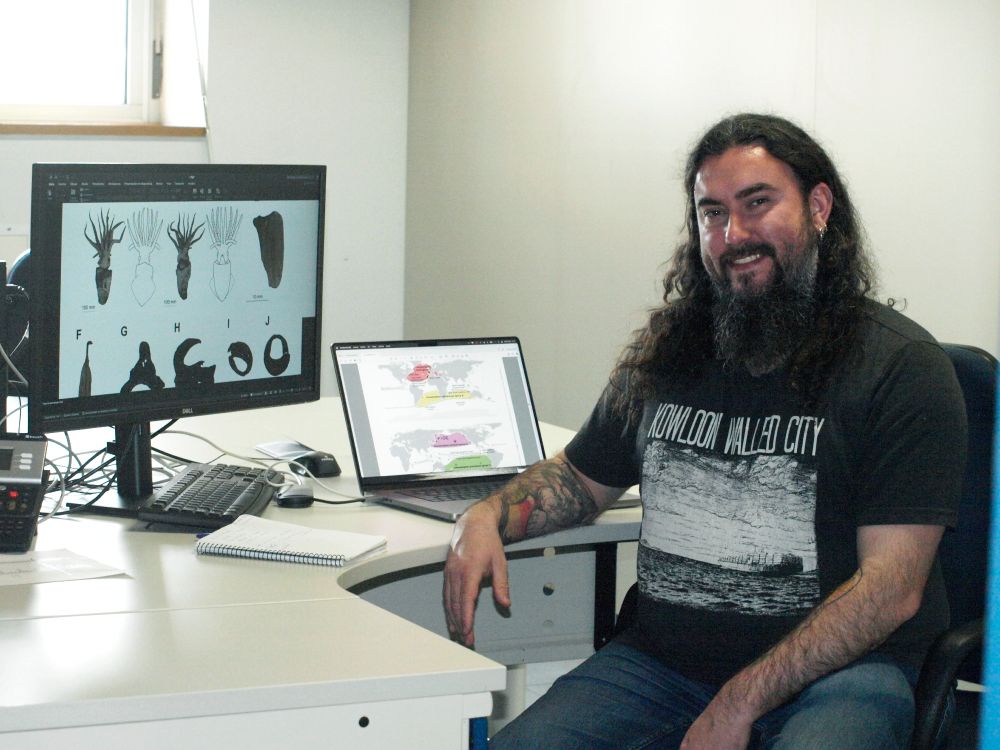
Fernando Fernández-Álvarez, @cefafalopodo.bsky.social se incorpora con un contrato Ramón y Cajal de la @ageinves.bsky.social.
Investiga patrones de biodiversidad en medios marinos mediante el uso de técnicas genómicas de depredadores, parásitos y microbioma 🦈🐙🪱🦠🧑🔬🧑💻
¡Bienvenido!
07.05.2025 09:23 — 👍 6 🔁 1 💬 1 📌 1
🧬🦪🦗🧽 Dealing/struggling with invertebrate evolutionary genomics
🎓 he/him postodoc in @robertofeuda.bsky.social lab at Uni of Leicester (UK), former PhD student at Uni of Bologna (IT)
🎨💭 Also drawing & communicating science
https://filonico.github.io/
We are a lab focused on the study of invasive soil invertebrates, mainly land planarians. Led by Marta Álvarez Presas and based at the Universitat de Barcelona
PhD candidate at @icmcsic.bsky.social. Global change, seagrass, nature based solutions and coastal habitat conservation🌿🌊
(she/her)
Postdoctoral researcher @ Harvard University | Holford Lab 🐙
Exploring the world, diving, hiking & petting every animal on the way 🐾
The Earth BioGenome Project (EBP), a moonshot for biology, aims to sequence, catalog, and characterize the genomes of all of Earth's eukaryotic biodiversity over a period of ten years.
🌲Keep up with all EBP updates: https://linktr.ee/earthbiogenomeproject
Tenured Scientist at IREC (CSIC-UCLM-JCCM)
#microbiome #phylosymbiosis #vectorBorneDiseases
Coastal birds #conservation @birdlifeoz.bsky.social
https://birdlife.org.au/programs/beach-nesting-birds
Managing @birdlifehoodie.bsky.social
#RStats enthusiast | #PloverLover | #PhD on Little Penguins foraging ecology | Always welcome 🐶 and 🐈 pics
Capturing beauty from a different point of view in West Yorkshire, UK. As a wheelchair-using bird photographer, I find endless inspiration at RSPB St Aidan's.
My website.
http://www.lukehaigh.co.uk
Trying to find my way in this wide weird world of marine biology 🐙🧬
On the search for a PhD in marine molecular ecology/biology.
Unrestrained foodie 🥯
Oceanographer • Evolution of Deep-Sea Corals • Lover of Open Source Education, Wild Things, Food, Surfing
Physics teacher
PhD in positrons long ago!
#ITeachPhysics
https://www.youtube.com/channel/UC4y8XUOkvJX7k0ixJM3HIEg
#Investigación #Marina y Divulgación del Centro Oceanográfico de Gijón/Xixón - CNIEO @CSIC
@ieo.es
Studying why and how behavior evolves, from mosquitoes to mole-rats | Postdoc/Leon Levy Scholar @Columbia working with Ishmail Abdus-Saboor | PhD @Princeton with Lindy McBride | 麻布/東大 alum 🇯🇵 | yukihaba.github.io
🌲🇺🇲 Endangered species protection for Sasquatch 🇺🇲🌲
PhD brain and genomic scientist. Ocean junkie. Computer wrangler. Open data believer. Geek. Punk. Not that kind of doctor. Views only my own. She/her
"Cada especie es una obra maestra de la biología que merece la pena conservar" (E.O. Wilson)
#taxonomy #naturalhistory #digitisation
@IEOoceanografia @CSIC
Puerto Pesquero, Cádiz-España
https://www.gbif.org/dataset/317fd0a9-1bcf-4e94-bc3c-a685c4693c10

























